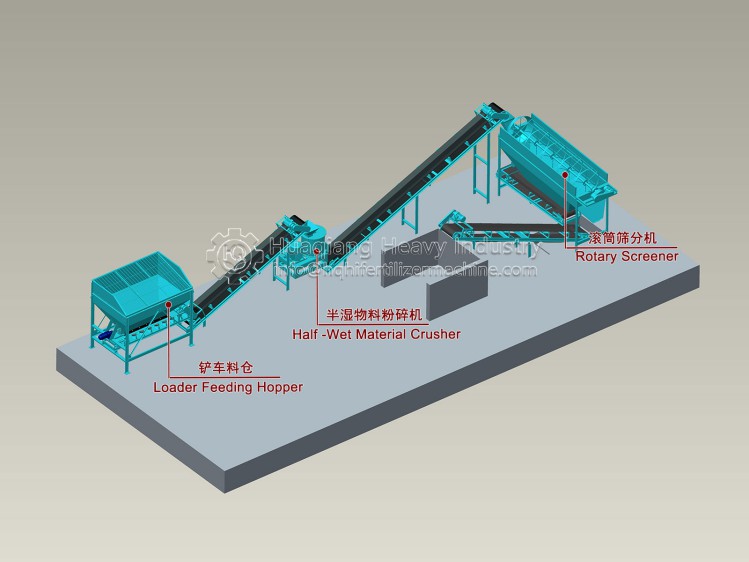The development prospects of using organic fertilizer production lines to process fertilizers are very broad, mainly due to the following trends and demands:
Enhanced awareness of environmental protection: With the global emphasis on environmental protection and sustainable development, reducing the use of chemical fertilizers and pesticides and shifting towards more environmentally friendly organic fertilizers has become a major trend in agricultural development. The organic fertilizer production line can convert agricultural waste, urban organic garbage, etc. into organic fertilizers, effectively reducing environmental pollution and in line with the development direction of green agriculture.
Soil health and food safety requirements: Long term and extensive use of chemical fertilizers can lead to soil structure damage and degradation, while organic fertilizers can improve soil structure, enhance soil fertility, promote healthy crop growth, reduce pesticide residues, enhance the quality and safety of agricultural products, and meet the growing demand of consumers for healthy food.
Policy support and market incentives: Many countries and regions have introduced policies to encourage organic agriculture and the use of organic fertilizers, such as subsidies and tax incentives, in order to promote sustainable agricultural development and reduce dependence on chemical fertilizers. These policies provide a favorable policy environment for the construction and operation of organic fertilizer production lines..jpg)
Technological progress and innovation: The technology of organic fertilizer production lines continues to advance, such as efficient fermentation technology, biotechnology, automation control, etc., making the production of organic fertilizers more efficient, environmentally friendly, and low-cost, and improving the market competitiveness of organic fertilizers.
Circular economy and resource recycling: Organic fertilizer production lines can achieve waste resource utilization, converting livestock and poultry manure, crop straw, urban organic waste, etc. into organic fertilizers, promoting the recycling of resources, and in line with the development concept of circular economy.
Market demand growth: With the continuous expansion of organic agriculture and organic food markets, the demand for organic fertilizers is also increasing, providing a broad market space for organic fertilizer production lines. Organic fertilizers are particularly popular in the cultivation of high-value crops such as flowers, fruits and vegetables, and tea.
International Exchange and Cooperation: The exchange and cooperation in global agriculture are becoming increasingly close, and the experience, technology, and market information of organic agriculture and organic fertilizer production are shared globally, promoting the cross-border development and market expansion of organic fertilizer production lines.
In summary, using organic fertilizer production lines to process fertilizers conforms to the trend of sustainable agricultural development and has broad market prospects and enormous development potential. With the continuous advancement of technology and optimization of policy environment, the production and application of organic fertilizers will become more widespread, making important contributions to the green transformation of global agriculture and environmental protection.


.jpg)





.jpg)